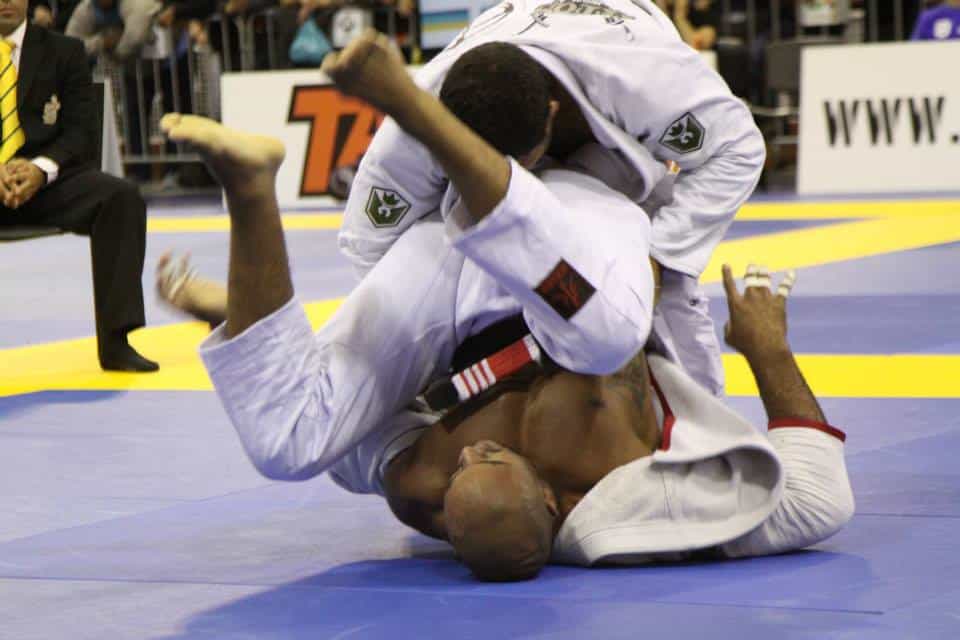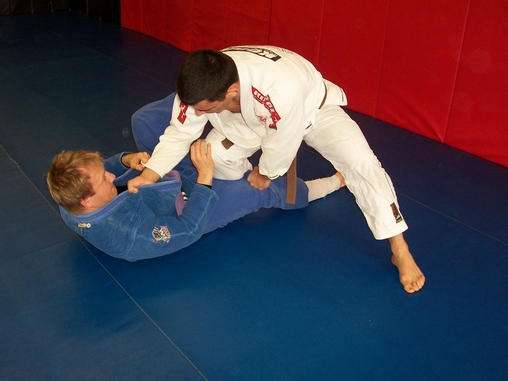You Don’t Need To Know Every BJJ Guard Pass… Just These 5
Whenever someone asks what makes BJJ different from other grappling arts, I always tell them it is the guard. The guard allows the person on the bottom to use all four of their limbs to prevent their opponent from advancing their position, while simultaneously threatening attacks and sweeps.
So it shouldn’t come as any surprise to learn that passing guard is one of the most difficult elements of Brazilian Jiu Jitsu. Compounding this difficulty is the sheer number of guards that your opponent can play against you! Rather than learn a BJJ guard pass for each guard you are confronted with, the best way to pass the guard is to learn passing positions.
Keep reading to learn the 5 passing positions that will help you pass every guard you come up against!
Passing Guard: The Most Difficult Task in Jiu Jitsu
If you’ve ever encountered a truly good guard player you know that passing guard is no easy task. Even if you know the right guard passes to use, a skilled opponent will know the counters to those guard passes! In order to pass a guard then you must not only know the technique but be able to identify and exploit weaknesses in your opponent’s guard, as well as present them with dilemmas.
This requires the right mindset; you’ve got to learn to enjoy passing. Essentially, this is the same as saying “you’ve got to enjoy playing Jiu Jitsu.” If you feel like you’re losing when you’re working on passing the guard it will sap your determination. Accept the grind and remember that completing a BJJ guard pass is one of the most difficult things you’ll ever have to do in Jiu Jitsu.
Its easy to make the mistake of thinking that BJJ is like rock/paper/scissors, where certain techniques always beat other techniques. The reality is that Jiu Jitsu is a sport where timing and control usually triumph where simple technique does not. Rather than learn a unique pass for each guard you’ll face, you are better off learning these five passing positions.
We’re calling them positions because getting there doesn’t get you past a guard. You’re not in side control. Once you’ve established grips, there’s still a lot that your opponent can do to stop you. However, mastering these BJJ guard pass positions will maximize your control and present more opportunities to pass.
5 Essential BJJ Guard Pass Positions
Note: these are not the only guard passing positions, they’re just the most reliable ones that have been proven to work at all belt levels, even in high level competition. If you spend time learning the leg drag, double under, knee cut, knee staple, and over-under positions, you’ll build a passing game that will intimidate anyone.
1. Leg Drag
Leg drag can be confusing because it is both a noun and a verb. We are focusing on the leg drag position (noun) instead of the leg drag pass (verb). This is a very powerful position that gives you the option of passing not just to side control, but directly to mount or even transitioning straight to the back.
The leg drag works when you take your opponent’s leg and literally drag it across your hips. The goal is to place your hip behind their knee while pinning their bottom leg beneath your shin. There are several different ways of maintaining the leg drag position, but in all of them, you’ll want a strong collar grip and to maintain strong downward pressure on their top leg.
A common error is to rush this BJJ guard pass instead of consolidating this position. The leg drag position is a powerful control position. Take your time, lock yourself into the leg drag, and only once you feel secure, transition to your pass.
2. Double Under
This fundamental BJJ guard pass position works great in both Gi and No-Gi. As a bonus, it is a highly uncomfortable position for your opponent, adding to its efficiency.

The pass starts with you placing both forearms, and eventually shoulders, underneath the legs of an opponent. The goal is to have the back of their knees on your shoulders and your hands clasped in front of their hip. Keeping an opponent stacked on their shoulders and neck is what grants the passer control in addition to adding to the guard player’s suffering.
3. Knee Cut
The knee cut is one of the most common BJJ guard passes in modern Jiu Jitsu. The position is easier to get into than leg drag or double unders, but keeping your balance can be tricky and will require practice. The goal is to get one leg in between your opponent’s legs, using it to staple one of their legs to the mat.

The position is somewhat unstable, particularly if your opponent is able to turn onto their side you are passing to. To prevent this keep their far shoulder pinned to the mat, either with an underhook or a strong stiff-arm.
Once you’ve developed a sense for the balance this position requires, it will enable you to pass nearly any guard.
4. Knee Staple
This BJJ guard pass is as old school as they come, yet remains tremendously effective.
Where the knee cut has you cutting your leg across their far leg, this pass begins by pinning their leg with the same side leg. Put another way, the knee cut has you pass your right leg across their right leg while the knee staple has you pass your right leg across their left leg.
As you enter into this position you’ll want to secure an underhook and a cross face. Passing guard without these is possible – but your job will be far more challenging!
Be sure to keep your opposite (non-stapling) leg actively tensioning their free leg. This will prevent them from putting you in half-guard as you initiate your pass.
5. Over-Under
This powerful passing position relies on smothering pressure and control of your opponent’s legs to set up the pass.
To get it you need an underhook on one leg, similar to the knee staple, just placed lower, with your grip on the hips. The second arm controls the bottom leg by going over it, whether with a pants grip or a grip on their shin.
The trick with this pass is that it is the only one in our list here that will have you go head down and butt up to pass. You’ll be driving your weight through your shoulder, straight into your opponent’s diaphragm. As long as you keep your head glued to your opponent’s hips (on the side opposite to the side you are passing guard) and your elbows tight to your body, they’ll be powerless to prevent it from happening.
To complete this BJJ guard pass, you’ll want to counterintuitively walk your legs back to the center. This will allow you to make a subtle shift in your hips and backstep into side control.
Summary
By learning these five passing positions you’ll have the tools to pass any guard. Rather than thinking of each of these as individual techniques, try to regard them as positions to advance to.
These BJJ guard pass positions have been proven throughout the highest levels of Jiu Jitsu, and if you are able to incorporate them into your passing you’ll quickly see results!

Evan is nomadic brown belt, currently living in Germany. He enjoys pressure passes and tacos.

3.5